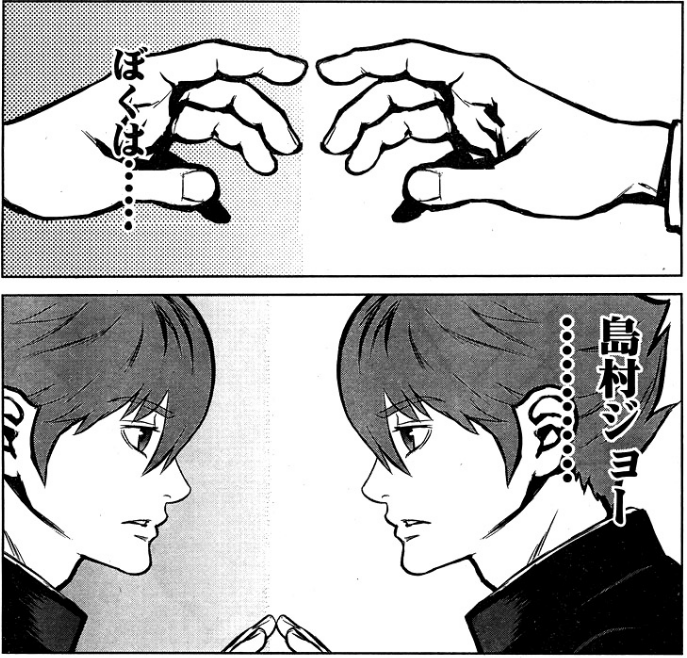In the manga adaptation by Gatou Asou of the 2012 CGI animated feature of Shoutarou Ishinomori's classic, Cyborg 009, titled "009 Re:Cyborg", I am across a panel that stuck with me in terms of how it highlighted the nature of Japanese writing.
The main character, Joe Shimamura, a teenager turned superhero, who is stuck in an immortal cybernetic body, uses the pronominal word boku, typically written as 僕, using the kanji - the ideographic characters, but the comic-book artist behind the work could as well has had him use ぼく or ボク, the hiragana and katakana, i.e. syllabic spellings, of the word.
The word itself signifies a younger male speaker, or someone who has a youthful aspect about them, be it positively or negatively so. It can also in regular circumstances be used as a semi-formal way of referring to oneself without sounding too stuffy or assertive.

At one point, our hero begins to question if he even recalls who he is, through these countless years of having an unchanging self, so to speak.
Hence,
ぼくは…… 島村ジョー…………
Boku wa.... Shimamura Jô....
"I am.... Joe Shimamura..."
Is impactful simply because the one key word, the subject of the sentence is written phonetically rather than ideographically, i.e. ぼく over 僕, hence the literal meaning of the kanji used to write the pronominal is lost and we get a mere sound based representation of it. A hollowed out "I" or "me" if you will.
This is not just beholden to pronominal nouns, but in general switching from ideographic to phonetic or vice versa helps an author underline a word for its significance.
For example, in the car-game series Grand Turismo, the word for car - usually written in kanji as 車, pronounced kuruma, can sometimes refer to any wheeled vehicle regardless of techonological or temporal modernity - is spelled out in katakana as クルマ, rendering distinct and thus standing out. Furthermore, this isolates it from its kanji counterparts other meanings. Katakana has furthermore associations with coolness, fashion or being "right-in-the-eyes." Converse hiragana is seens as cute, traditional or softer. Thus in hiragana くるま would serve the opposite purpose, along with the said associations, its writing would make it blend in with the other hiragana words in the sentence since katakana is otherwise "less" common than hiragana - since hiragana is used to write syntactical and grammatical components.